Applying car wax is an essential part of automotive maintenance, offering protection and enhancing your vehicle’s appearance. At CARS.EDU.VN, we’ll guide you through each step of the car waxing process, helping you achieve a showroom shine. Discover the best methods and products to keep your car looking its best with our expert advice on car detailing and auto care. Learn more about protecting your car’s finish and maintaining its value by exploring our extensive resources at CARS.EDU.VN.
1. Understanding the Importance of Car Wax
Car wax is more than just a cosmetic enhancement; it is a crucial protective layer for your vehicle’s paint. According to the International Detailing Association (IDA), regular waxing can significantly extend the life of your car’s paint job by shielding it from environmental hazards. Here are the key benefits:
- Protection from UV Rays: Prolonged exposure to sunlight can cause the paint to fade and oxidize. Wax acts as a barrier, deflecting harmful UV rays.
- Shield Against Contaminants: Daily driving exposes your car to pollutants, bird droppings, tree sap, and road salts, all of which can damage the paint. Wax creates a protective shield against these contaminants.
- Enhances Appearance: Wax fills in minor imperfections, creating a smooth, reflective surface that enhances the car’s color and shine.
- Water Beading: A good wax causes water to bead and roll off, reducing water spots and making it easier to keep your car clean.
- Easier Cleaning: Wax makes it harder for dirt and grime to stick to the paint, making future washes quicker and more effective.
2. Gathering the Necessary Supplies
Before you start, gather all the necessary supplies. This will streamline the process and ensure you have everything you need at your fingertips. Here’s a comprehensive checklist:
- High-Quality Car Wax: Choose a wax that suits your needs. Options include carnauba wax, synthetic wax, and ceramic wax.
- Wash Bucket: For soap and water.
- Car Wash Soap: Use a pH-balanced car wash soap to avoid damaging the paint.
- Microfiber Wash Mitt: Soft and gentle for washing the car.
- Microfiber Drying Towels: For drying the car without scratching.
- Clay Bar Kit: To remove embedded contaminants (includes clay bar and lubricant).
- Applicator Pads: Foam or microfiber pads for applying the wax.
- Microfiber Buffing Towels: Clean, soft towels for removing the wax.
- Detailing Spray: To remove any streaks or residue after waxing.
- Optional: Dual-Action Polisher: For those seeking a professional-grade finish (more on this later).
You can find detailed product reviews and comparisons at CARS.EDU.VN to help you make informed choices.
3. Preparing Your Car: The Essential First Steps
Proper preparation is key to achieving a professional-looking wax job. Neglecting these steps can result in a subpar finish or even damage to your car’s paint.
3.1. Washing Your Car Thoroughly
Start by washing your car to remove dirt, dust, and grime. Park your car in a shaded area to prevent the soap from drying on the paint.
- Rinse the Car: Use a hose to rinse the entire car, removing loose dirt and debris.
- Mix Soap and Water: Follow the instructions on your car wash soap to mix the appropriate amount with water in your wash bucket.
- Wash the Car: Using your microfiber wash mitt, start at the top of the car and work your way down. Rinse the mitt frequently in a separate bucket of clean water to avoid reintroducing dirt to the paint.
- Rinse Again: Thoroughly rinse the car with the hose to remove all traces of soap.
- Dry the Car: Use clean microfiber drying towels to dry the car completely.
3.2. Decontaminating the Paint with a Clay Bar
Even after washing, your car’s paint may still have embedded contaminants that washing alone cannot remove. A clay bar is used to safely lift these contaminants, leaving the paint smooth and ready for waxing.
- Prepare the Clay Bar: Knead the clay bar until it is soft and pliable. Flatten it into a disc shape for easier use.
- Lubricate the Surface: Spray the surface with clay bar lubricant. This prevents the clay bar from scratching the paint.
- Clay the Surface: Gently glide the clay bar over the lubricated surface in back-and-forth motions. You will feel the clay bar picking up contaminants.
- Wipe Clean: Use a clean microfiber towel to wipe away any residue.
- Repeat: Continue this process on all painted surfaces of the car.
3.3. Drying the Car Completely
Wax adheres best to a clean, dry surface. Ensure your car is completely dry before proceeding to the next step. Use a microfiber drying towel to absorb any remaining moisture.
4. Choosing the Right Car Wax
Selecting the right car wax is crucial for achieving the desired results. Here’s a breakdown of the different types of car wax available:
4.1. Carnauba Wax
Carnauba wax is derived from the leaves of the carnauba palm tree, native to Brazil. It is known for its deep, warm shine and is a favorite among car enthusiasts.
- Pros:
- Provides a rich, deep gloss
- Enhances the color of the paint
- Natural and biodegradable
- Cons:
- Not as durable as synthetic waxes
- Requires more frequent application (every 6-8 weeks)
- Can be more expensive than synthetic waxes
4.2. Synthetic Wax
Synthetic waxes, also known as paint sealants, are made from man-made polymers. They offer excellent durability and protection.
- Pros:
- Long-lasting protection (up to 6 months)
- Excellent resistance to UV rays and contaminants
- Easy to apply and remove
- Cons:
- May not provide the same depth of shine as carnauba wax
- Can look “artificial” on some colors
4.3. Ceramic Wax
Ceramic waxes are the newest type of car wax on the market. They contain silicon dioxide (SiO2) particles, which create a hard, protective layer on the paint.
- Pros:
- Extremely durable (up to 1 year or more)
- Provides excellent water beading and self-cleaning properties
- Resistant to chemicals and scratches
- Cons:
- Can be more expensive than other types of wax
- Requires careful application to avoid streaking
Visit CARS.EDU.VN for in-depth comparisons and reviews of different car wax products.
5. Applying the Car Wax: Step-by-Step Guide
Now that you’ve prepared your car and chosen the right wax, it’s time to apply it. Follow these steps for a professional-looking finish:
5.1. Working in a Shaded Area
Avoid applying wax in direct sunlight, as this can cause the wax to dry too quickly and become difficult to remove. A shaded area or garage is ideal.
5.2. Applying Wax to an Applicator Pad
Apply a small amount of wax to your applicator pad. Avoid applying wax directly to the car’s paint, as this can lead to uneven coverage.
5.3. Using Proper Techniques to Apply Wax
Apply the wax to the car in thin, even layers. Use overlapping motions to ensure complete coverage.
- For Liquid Wax: Apply in circular motions.
- For Paste Wax: Apply in straight lines.
Work in small sections, such as a door or half of the hood, at a time. This will prevent the wax from drying too much before you have a chance to remove it.
5.4. Allowing the Wax to Dry
Allow the wax to dry according to the manufacturer’s instructions. This usually takes 10-30 minutes. The wax should appear hazy when it is ready to be removed.
5.5. Removing the Wax
Use a clean, soft microfiber towel to remove the wax. Fold the towel into quarters, and use a fresh section of the towel for each pass. Use light pressure to remove the wax, and buff the surface to a shine.
5.6. Buffing the Car to a Shine
After removing the wax, use a clean microfiber towel to buff the car to a shine. This will remove any remaining residue and enhance the gloss of the paint.
6. Advanced Techniques: Using a Dual-Action Polisher
For those seeking a professional-grade finish, a dual-action (DA) polisher can be used to apply and remove wax. A DA polisher is a power tool that oscillates and rotates, making it safer and easier to use than a rotary polisher.
6.1. Benefits of Using a DA Polisher
- More Even Application: A DA polisher applies wax more evenly than hand application.
- Faster Application: A DA polisher can significantly reduce the amount of time it takes to apply and remove wax.
- Enhanced Results: A DA polisher can enhance the gloss and depth of shine.
6.2. Steps for Using a DA Polisher
- Apply Wax to Polishing Pad: Attach a clean foam polishing pad to the DA polisher and apply a small amount of wax to the pad.
- Set the Speed: Set the DA polisher to a low speed (around 2-3).
- Apply Wax to the Car: Gently guide the polisher over the surface of the car in overlapping motions.
- Allow the Wax to Dry: Allow the wax to dry according to the manufacturer’s instructions.
- Remove the Wax: Switch to a clean microfiber polishing pad and use the DA polisher to remove the wax.
- Buff to a Shine: Use a clean microfiber towel to buff the car to a shine.
Note: Practice using a DA polisher on an inconspicuous area of the car before applying it to the entire vehicle.
7. Post-Waxing Care and Maintenance
After waxing your car, it’s important to maintain the finish to prolong the benefits of the wax. Here are some tips:
- Wash Regularly: Wash your car regularly to remove dirt and contaminants. Use a pH-balanced car wash soap.
- Dry Properly: Use clean microfiber drying towels to dry the car after washing.
- Avoid Harsh Chemicals: Avoid using harsh chemicals or abrasive cleaners on your car’s paint.
- Store in a Garage: When possible, store your car in a garage to protect it from the elements.
- Reapply Wax: Reapply wax every 3-6 months, depending on the type of wax you use and the conditions in which you drive.
8. Common Mistakes to Avoid
Waxing your car can be a rewarding experience, but it’s important to avoid common mistakes that can lead to subpar results or damage to your car’s paint.
- Applying Wax in Direct Sunlight: As mentioned earlier, avoid applying wax in direct sunlight, as this can cause the wax to dry too quickly and become difficult to remove.
- Applying Too Much Wax: Applying too much wax can make it difficult to remove and can result in a hazy finish.
- Using the Wrong Products: Using the wrong products, such as abrasive cleaners or harsh chemicals, can damage your car’s paint.
- Skipping Preparation: Skipping the preparation steps, such as washing and claying, can result in a subpar finish.
- Using Dirty Towels: Using dirty towels can scratch the paint. Always use clean microfiber towels.
9. Choosing the Right Wax for Your Car’s Paint Color
The color of your car’s paint can influence the type of wax that will provide the best results. Here are some general guidelines:
- Dark Colors (Black, Dark Blue, Dark Gray): Dark-colored cars tend to show imperfections more easily, so it’s important to use a wax that fills in minor scratches and swirl marks. Carnauba waxes are often a good choice for dark colors, as they provide a deep, rich shine.
- Light Colors (White, Silver, Light Gray): Light-colored cars are more forgiving when it comes to imperfections, so you can often get away with using a synthetic wax. Synthetic waxes provide excellent durability and protection, and they can also enhance the gloss of light-colored paints.
- Red Colors: Red paint is prone to fading, so it’s important to use a wax that provides excellent UV protection. Synthetic waxes and ceramic waxes are both good choices for red cars.
- Metallic Colors: Metallic paints have a unique shimmer that can be enhanced with the right wax. Carnauba waxes and synthetic waxes can both be used on metallic paints, but it’s important to choose a wax that is specifically designed for metallic finishes.
10. Understanding the Science Behind Car Wax
Car wax works by creating a barrier between the car’s paint and the environment. The wax fills in minor imperfections in the paint, creating a smooth, reflective surface. The wax also contains ingredients that protect the paint from UV rays, contaminants, and other environmental hazards.
- Carnauba Wax: Carnauba wax is a natural wax that is derived from the leaves of the carnauba palm tree. It is composed of esters, fatty acids, and alcohols. Carnauba wax provides a deep, warm shine and enhances the color of the paint.
- Synthetic Wax: Synthetic waxes are made from man-made polymers. They are designed to provide long-lasting protection and resistance to UV rays and contaminants.
- Ceramic Wax: Ceramic waxes contain silicon dioxide (SiO2) particles, which create a hard, protective layer on the paint. The SiO2 particles bond to the paint at a molecular level, providing excellent durability and water beading properties.
11. Addressing Specific Car Waxing Concerns
11.1. Removing Wax from Plastic Trim
Car wax can sometimes get onto plastic trim, leaving behind a white residue. Here’s how to remove it:
- Use a Soft Brush: Use a soft brush, such as a toothbrush, to gently scrub the wax off the plastic trim.
- Apply a Plastic Restorer: Apply a plastic restorer to the trim to help remove the wax and restore the color.
- Wipe Clean: Wipe the trim clean with a microfiber towel.
11.2. Removing Wax from Glass
Car wax can also get onto glass, leaving behind streaks and smudges. Here’s how to remove it:
- Use a Glass Cleaner: Use a glass cleaner to clean the glass.
- Wipe Clean: Wipe the glass clean with a microfiber towel.
- Use a Razor Blade (If Necessary): If the wax is difficult to remove, you can use a razor blade to gently scrape it off. Be careful not to scratch the glass.
11.3. Dealing with Swirl Marks
Swirl marks are fine scratches in the paint that can be caused by improper washing or drying techniques. Here’s how to deal with them:
- Polish the Paint: Use a dual-action polisher and a polishing compound to remove the swirl marks.
- Apply Wax: Apply wax to protect the paint and enhance the shine.
12. The Future of Car Wax Technology
The field of car care is continually evolving, with new technologies and products emerging regularly. Here are some trends to watch for in the future of car wax:
- Graphene Coatings: Graphene is a one-atom-thick layer of carbon atoms arranged in a hexagonal lattice. It is incredibly strong, lightweight, and conductive. Graphene coatings are being developed for use in car care products, as they offer excellent durability, scratch resistance, and water beading properties.
- Self-Healing Coatings: Self-healing coatings are designed to repair minor scratches and swirl marks on their own. These coatings contain polymers that can flow and fill in imperfections when exposed to heat or sunlight.
- Spray-On Ceramic Coatings: Spray-on ceramic coatings are becoming increasingly popular, as they are easy to apply and provide excellent protection. These coatings can be applied in minutes and offer durability of up to one year or more.
13. Real-World Examples of Car Wax Benefits
Consider these scenarios to appreciate the practical benefits of regular car waxing:
- Scenario 1: The Beach Trip: You drive to the beach, and your car is exposed to salt spray and sand. Without wax, the salt can corrode the paint, and the sand can cause scratches. Wax provides a protective barrier, preventing damage.
- Scenario 2: The Summer Heat: You park your car in direct sunlight during the summer. Without wax, the UV rays can fade and oxidize the paint. Wax reflects the UV rays, protecting the paint.
- Scenario 3: The Bird Dropping Incident: A bird leaves a dropping on your car’s hood. Without wax, the acidic dropping can etch into the paint. Wax provides a protective layer, making it easier to remove the dropping without causing damage.
14. Comparing Car Wax to Other Paint Protection Methods
While car wax is a popular and effective method of paint protection, it’s not the only option available. Here’s a comparison of car wax to other paint protection methods:
| Method | Pros | Cons | Durability | Cost |
|---|---|---|---|---|
| Car Wax | Easy to apply, enhances shine, affordable | Requires frequent reapplication, less durable than other methods | 1-6 months | Low |
| Paint Sealant | More durable than car wax, good UV protection | May not provide the same depth of shine as carnauba wax | 6-12 months | Medium |
| Ceramic Coating | Extremely durable, excellent water beading, scratch resistance | More expensive, requires professional installation | 1-5 years | High |
| Paint Protection Film | Ultimate protection against scratches and rock chips, self-healing | Most expensive, requires professional installation | 5-10 years | Very High |
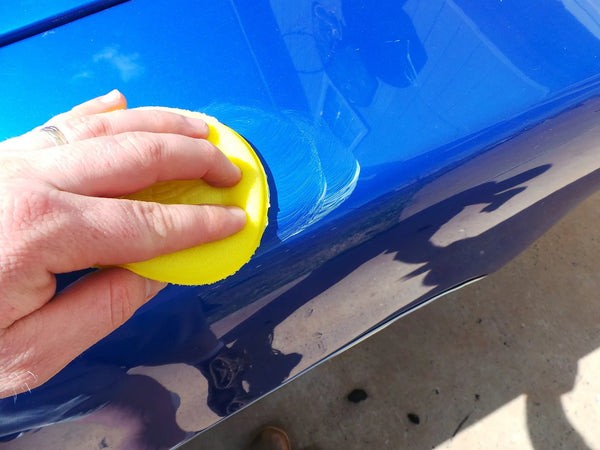
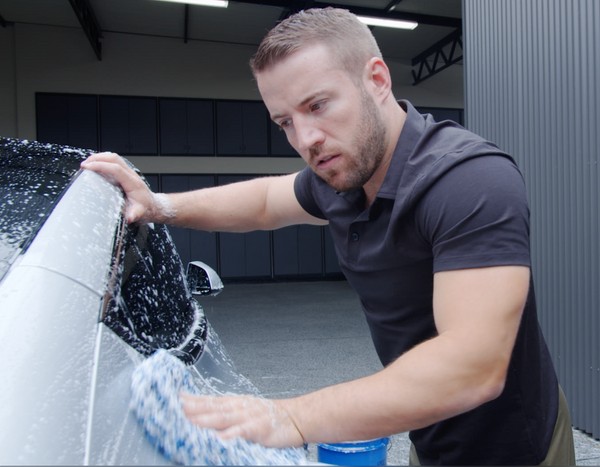
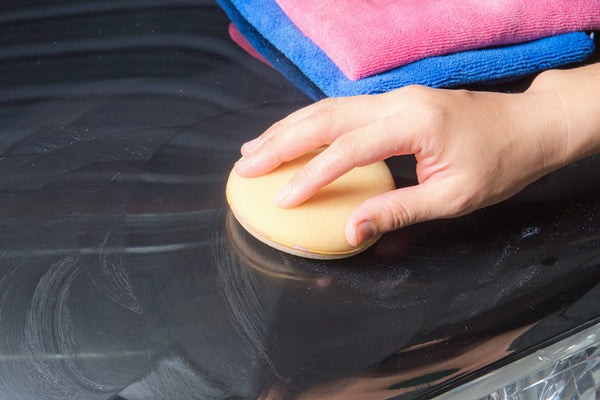
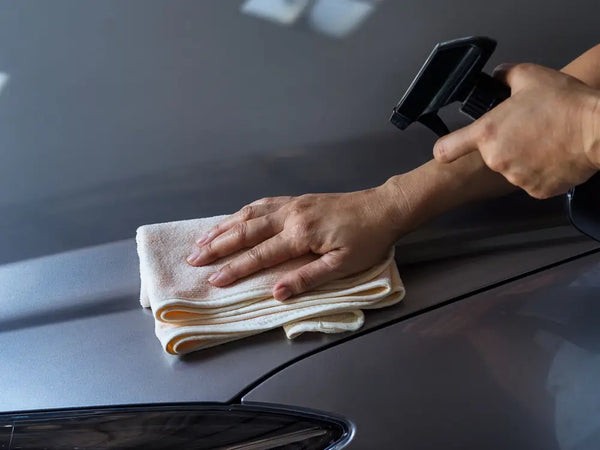
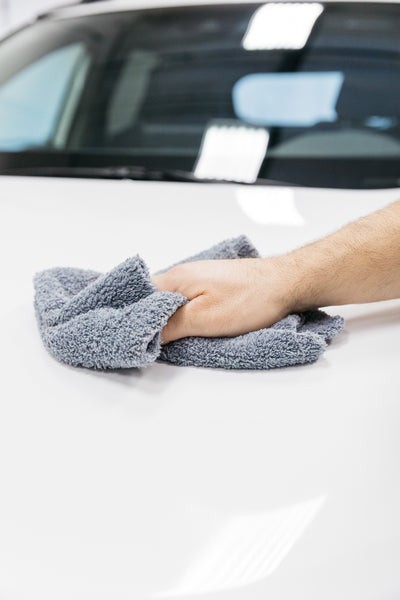
15. Frequently Asked Questions (FAQs) About Applying Car Wax
Here are some frequently asked questions about applying car wax:
- How often should I wax my car? It depends on the type of wax you use and the conditions in which you drive. Generally, you should wax your car every 3-6 months.
- Can I wax my car in direct sunlight? No, avoid waxing your car in direct sunlight, as this can cause the wax to dry too quickly and become difficult to remove.
- What is the best type of wax for my car? The best type of wax for your car depends on your preferences and budget. Carnauba waxes provide a deep shine, synthetic waxes provide long-lasting protection, and ceramic waxes offer excellent durability and water beading properties.
- Can I use a DA polisher to apply wax? Yes, a DA polisher can be used to apply wax. It will result in more even application, faster application, and enhanced results.
- How do I remove wax from plastic trim? Use a soft brush and a plastic restorer to remove wax from plastic trim.
- How do I remove wax from glass? Use a glass cleaner and a microfiber towel to remove wax from glass.
- What are swirl marks? Swirl marks are fine scratches in the paint that can be caused by improper washing or drying techniques.
- How do I remove swirl marks? Use a dual-action polisher and a polishing compound to remove swirl marks.
- What is graphene? Graphene is a one-atom-thick layer of carbon atoms arranged in a hexagonal lattice. It is incredibly strong, lightweight, and conductive.
- Are ceramic coatings worth the investment? Ceramic coatings are a worthwhile investment if you want long-lasting protection, excellent water beading, and scratch resistance.
16. Conclusion: Achieving a Showroom Shine
Applying car wax is an essential part of maintaining your vehicle’s appearance and protecting its paint. By following the steps outlined in this guide, you can achieve a professional-looking finish and keep your car looking its best for years to come. Remember to choose the right wax for your needs, prepare your car properly, and apply the wax in thin, even layers. With a little practice and patience, you can transform your car from dull to dazzling.
For more detailed information, expert advice, and product recommendations, visit CARS.EDU.VN. We provide comprehensive resources to help you with all your automotive care needs. Our team of experts is dedicated to providing you with the latest information and best practices to keep your car in top condition.
Is your car looking a little lackluster? Do you dream of a showroom shine but feel overwhelmed by the process? At CARS.EDU.VN, we understand the challenges of car maintenance and offer expert solutions tailored to your needs. Whether you’re seeking advice on the best waxing products, guidance on removing stubborn contaminants, or tips for achieving a flawless finish, our comprehensive resources have you covered. Let CARS.EDU.VN be your trusted partner in keeping your vehicle looking its absolute best. Visit our website or contact us today at 456 Auto Drive, Anytown, CA 90210, United States, Whatsapp: +1 555-123-4567 to discover how we can help you achieve automotive perfection. Explore more insightful articles and services at cars.edu.vn and unlock the full potential of your car’s appearance.